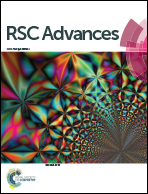Novel bio-based filler: hyperbranched polymer modified leather buffing dust and its influence on the porous structure and mechanical properties of polyurethane film
Abstract
An amino-terminated hyperbranched polymer (A-HP) was employed to modify leather buffing dust (BD) to prepare functional filler, hyperbranched buffing dust (HBD). The structure and morphology of BD and HBD were characterized by XPS, DSC and SEM. Furthermore, HBD was added into the typical solvent type polyurethane (PU) to prepare a wetting PU film which was used as the coating for synthetic leather. By changing the dosage of HBD, the filler species, the properties of the porous structure and mechanical strength of the PU film were analyzed by SEM, DMA and so on. The experimental results indicated that with the increase of the dosage of HBD, the porous structure of the PU film increase. The content of the N element for BD increases from 4.27% to 7.29%. After modification and ball milling, the fineness of most fibers was in the range of 6.7–6.9 μm. The fiber dispersion state of HBD was more uniform. The Tg of the PU film with HBD is −8.67 °C, while for lignin is −8.41 °C, indicating that the wetting PU film filled with HBD has better flexibility at low temperature.



 Please wait while we load your content...
Please wait while we load your content...